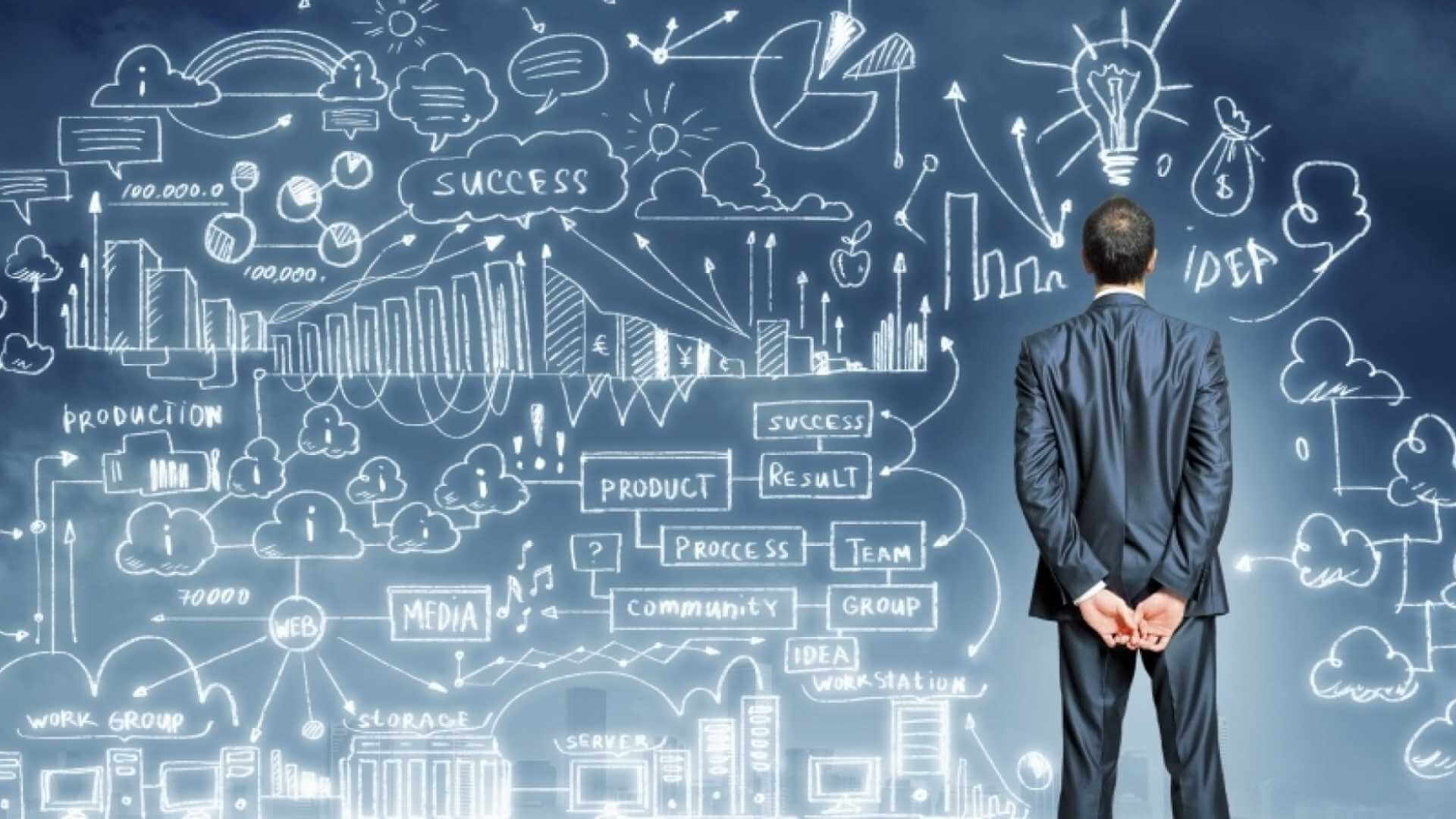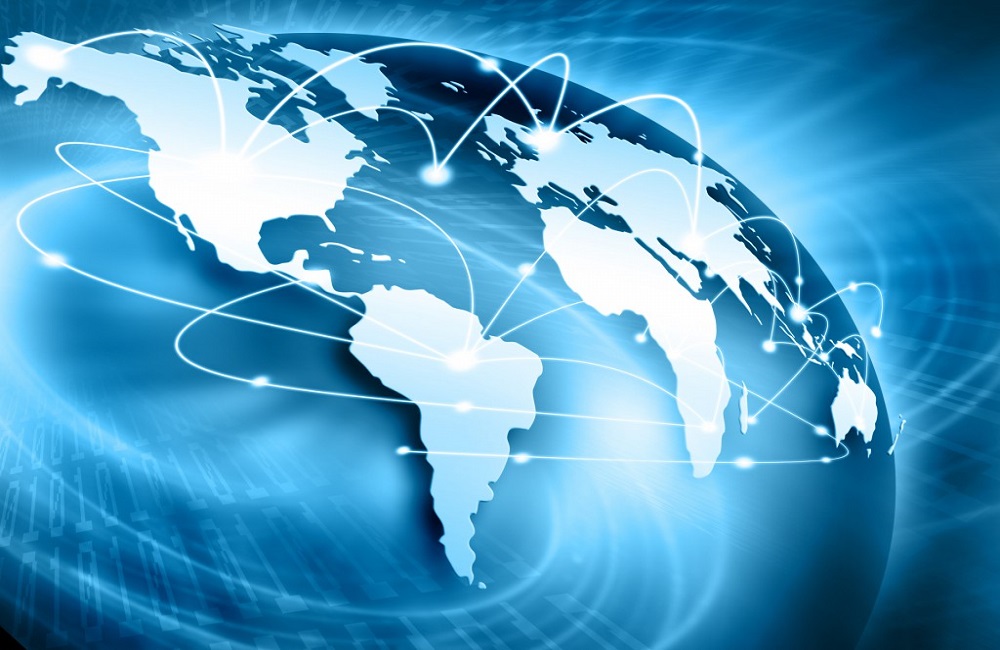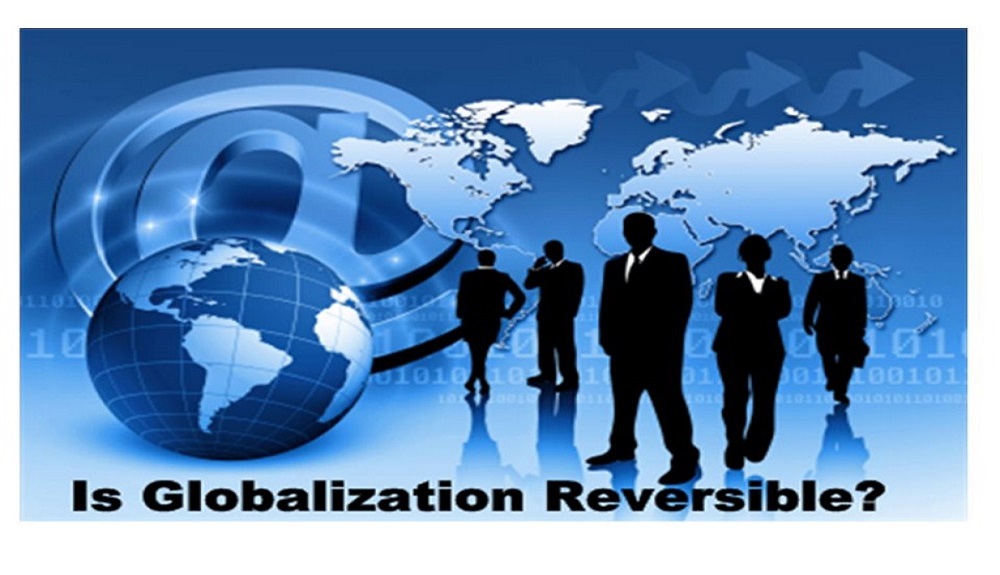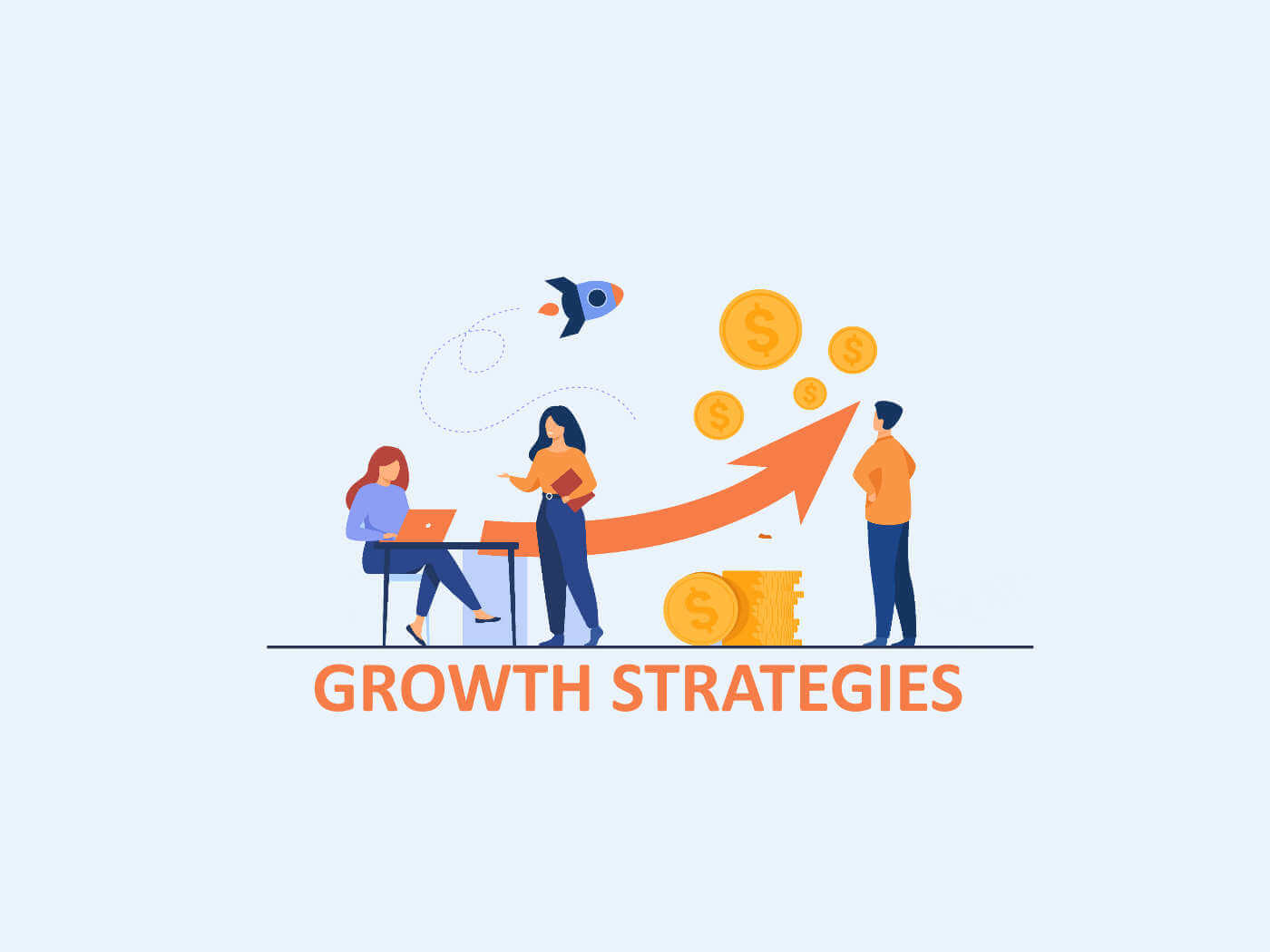The Internationalization Process in the 21st Century: Born-Global, Born-Again Global versus Gradual Global pathways
First, credit goes to McKinsey & Company for exploring the “born global” concept in 1993. The motivation for this blog arose from a number of events including an internal debate on the utility of the traditional internationalization process in the 21st century’s VUCA global business environment, the rapid/dedicated internationalization pathways pursued by smaller entrepreneurial firms since the 1990s, and some critical takeaways from the 2008 Boston Consulting Group Hal Sarkin’s book titled “Globality: Competing with Everyone from Everywhere for Everything”. But what exactly are born global and born again global firms? Born global firms are generally smaller entrepreneurial firms which internationalize at, near or shortly after inception (circa 2-5 years) by deriving a substantial proportion of their total (global) revenue from foreign markets. From the author’s perspective, they are pursuing a “globalization on steroids” strategy or something to that effect. This concept seems to have been well embraced/implemented first, by Australian exporters and then insatiably by emerging markets entities but in particular the recently globalized emerging companies from China and other rapidly developing economies of Africa, Asia, LATAM and MENAT. Underpinning the success of the “born global” phenomenon is the shift away from the traditional gradual internationalization process {Uppsala model, etc}. There is no need to take a deep dive into the traditional views of the internationalization process of the firm. But at its core, the traditional view holds/argues that it is fundamentally an incremental/gradual process wherein enterprises first venture into adjacent markets and then eventually expand the geographic footprint into the more distant markets. As firms venture further away from the home country they increase commitment to international markets which necessitate acceptance/tolerance of relatively higher risks inherent in international business environment. However, this is done in a gradual, stepwise manner through a number of sequential evolutionary stages. Why the need for the relatively lengthy process you might ask? Well, the model correctly argues that foreign market knowledge deficit is a prime barrier to organizations eager to explore/exploit the opportunities in selling to non-domestic customers. To manage this foreign market knowledge gap, organizations embark on a trial and error approach while acquiring the requisite knowledge of foreign market(s). In essence, the foray into foreign markets is a gradual/sequential process with risk minimization and internalization (control of foreign operation(s)) at a premium. As these entities gain knowledge/experience in operating in the foreign market(s) they become a bit more risk tolerant because they can better manage/handle the inherent foreign market risks/uncertainties through the incremental decision-making process wherein lessons learned from previous phases of internationalization process can be applied to the next phase. Consequently, the organization is more likely to hike its commitment in the foreign market(s) by increasing investments therein. Fast forward to the 21st century with its fast evolving competitive landscape and we now have the emergence of the “born again global” phenomenon. Born again global firms are typically firms that are well established in and derive virtually all their global sales from the domestic market. These firms had no apparent need to internationalize operations but have suddenly embraced the rapid/accelerated and dedicated internalization. So what are the strategic triggers for this radical turnabout and/or conversion to accelerated internationalization?
What is your 21st Century’s Competitive Strategy?—Would it Pass the Strategy Stress Test?
Since predictions about the future are inherently difficult, is it an over exaggeration or “extreme” pessimism to predict that by 2025 the global competitive landscape will be dramatically stiffer and divorced from anything businesses across the globe have experienced so far in the first seventeen years of the 21st century? Should senior management really start sleeping like babies (i.e. wake up every two hours crying) or is this a false alarm and/or “crying wolf”? Well, just speaking for myself I am jumping out of my clothes in fear, but the fear is moderated by the deliberate effort to embrace and plan for the ginormous disruptive forces being unleashed by the all-encompassing industry 4.0. inclusive of but not limited to digitization, digitalization, digital transformation, digital disruption, artificial intelligence, intelligent machines, augmented reality, big data/data analytics, quantum computing, additive manufacturing (aka 3D printing), mass customization, just to name a few.
In light of this mind-boggling, yet positive technological and economic developments and the new competitive realities of the 21st century, how can forward-thinking 21st-century transformative leaders and learning organizations maximize the utility of these evolutionary and revolutionary changes to create/gain/retain competitive advantage? The challenges these forces present will inevitably demand the development and adoption of select “new” 21st competitive strategies. What is drastically different today and going forward in the global business environment which might trip the tried-and-true competitive strategies of the 20th century and/or may be less optimal in addressing?.
The question/concern may seem ambiguous and/or generic so let me contextualize the perspective. During the past several years Amazon, Google, and other high profile U.S. multinationals but in particular Amazon has morphed from an online purveyor of books into a multi-business entity or rather a “conglomerate” with operations spanning many far-flung (disparate) industries/sectors. One may ponder as to why diversification beyond the core or conglomeration as a corporate level strategy which was/is frowned upon may be an effective/successful grand strategy to achieve Amazon’s long run objectives in the 21st century.
Could disappearing/rupturing industry boundaries partially enabled by digital transformation and other disruptive/breakthrough innovations stated above and in tandem with internally driven organizational capabilities be credited for Amazon’s enviable competitive position?
Now, which specific business strategy (ies) is Amazon implementing to create/gain/retain its 21st century competitive advantage? Is it a singular generic strategy, integrated/ambidextrous strategy, strategy segmentation, etc, etc? I doubt if the plausible response is that obvious. What can be learned from the argument presented herein to shape an entity’s competitive strategy to facilitate sustainable profitable growth in the 21stcentury’s VUCA global competitive environment?
The internationalization process/pathway for SMEs in the new-normal endemic coronavirus global business environment.
First, as the saying goes, “plan/prepare for the worst hope for best”. Tenarries MCG thinks that the SARS-CoV-2 pandemic will likely morph into an endemic humanity must learn to live with. Of course, if it miraculously goes away, that would be a much welcome relief.
In a previews blog, TMCG argued that globalization is not reversible. While the verdict on the phenomenon’s future is open to debate, TMCG believes that deglobalization (reverse globalization) is unlikely in the short-to-intermediate frameworks. However, globality in the intermediate to long-run frameworks is a more likely end-state of globalization. Consequently, a future-centric thinking 21st-century internationalization process may be the plausible optimal internationalization strategy.
 The incremental geographic market expansion strategy of older/established multinational enterprises (MNEs) is not tenable for SMEs in the 21st century. Why? Considering the rapid and frightening pace of changes in the global competitiveness landscape wrought by speedy technological advancements, globalization, converging global consumer tastes and preferences, the “new economy paradox” (higher/better quality, affordable/lower prices, frequent/faster innovation) to mention only four. SMEs must, therefore, quickly globalize by venturing into international markets where their products/services are needed to 1) enhance their global competitiveness, 2) hike global sales and profits, 3) exercise a strategic offensive move that ties global competitors’ hands to their home markets and thus forestall their overseas expansion ambition, to mention only three drivers of internationalization.
How can SMEs rapidly globalize and derive a significant portion of their sales in international markets? One option is to selectively tweak “a not-so-new” paradigm in foreign market entry modes embodied in the born global (BG), and born-again global (BAG) internationalization process. The BG concept is not new but has long existed in certain Nordic countries and nations with relatively small domestic markets (ala Australia, New Zealand, Singapore).
Skipping the traditional/classical/incremental internationalization process is a high-risk adventure. However, an aspiring BG or BAG entity leader and talented management team endowed with tangible and intangible resources, organizational capabilities, and a successful international business experience can enable the organization (especially technology-focused firms) to globalize its operations quickly.
The incremental geographic market expansion strategy of older/established multinational enterprises (MNEs) is not tenable for SMEs in the 21st century. Why? Considering the rapid and frightening pace of changes in the global competitiveness landscape wrought by speedy technological advancements, globalization, converging global consumer tastes and preferences, the “new economy paradox” (higher/better quality, affordable/lower prices, frequent/faster innovation) to mention only four. SMEs must, therefore, quickly globalize by venturing into international markets where their products/services are needed to 1) enhance their global competitiveness, 2) hike global sales and profits, 3) exercise a strategic offensive move that ties global competitors’ hands to their home markets and thus forestall their overseas expansion ambition, to mention only three drivers of internationalization.
How can SMEs rapidly globalize and derive a significant portion of their sales in international markets? One option is to selectively tweak “a not-so-new” paradigm in foreign market entry modes embodied in the born global (BG), and born-again global (BAG) internationalization process. The BG concept is not new but has long existed in certain Nordic countries and nations with relatively small domestic markets (ala Australia, New Zealand, Singapore).
Skipping the traditional/classical/incremental internationalization process is a high-risk adventure. However, an aspiring BG or BAG entity leader and talented management team endowed with tangible and intangible resources, organizational capabilities, and a successful international business experience can enable the organization (especially technology-focused firms) to globalize its operations quickly.
 Below is a “comprehensive” list of country and business risk analysis that must be performed before embarking on foreign market entry, foreign market operation, foreign market investment, and foreign market exit.
Fundamental of Country & Business Risk Analysis
1. Main variables that impact country risk
Below is a “comprehensive” list of country and business risk analysis that must be performed before embarking on foreign market entry, foreign market operation, foreign market investment, and foreign market exit.
Fundamental of Country & Business Risk Analysis
1. Main variables that impact country risk
- Political
- Economic
- Financial
- Legal
- Social
- Cultural
- Geographic
Yes, Clayton Christensen is right: Innovation is the answer.
In the fast-changing and hypercompetitive 21st-century global business environment, the best led, managed, and future thinking organizations constantly scan the external business environment for several purposes. From this author’s perspective, an organization’s ability to detect if its industry is about to and/or undergoing disruption would strongly influence its long-run survival. According to the Clayton Christenson institute, “Disruptive Innovations are NOT breakthrough technologies that make good products better; rather they are innovations that make products and services more accessible and affordable, thereby making them available to a larger population.” Consequently, Tesla and Uber, may be deemed “breakthrough innovations” but should not be regarded as disruptive innovations. Now, getting back to the question of what are the indicators, questions, or checkmarks a company can investigate to determine a game-changing innovation(s) may/will disrupt its industry?
There are several indicators/questions, but the four relevant/critical ones are 1) does the invention meet a fundamental need? 2) is it less expensive/affordable and more accessible? 3) is the invention easy to use? 4) to drive adoption of the invention, is the right ecosystem in place?
 Suppose your business operates in either the auto (e.g. internal combustion engine vs hybrid vs electric), banking (e.g. traditional banks vs fintech), entertainment (e.g. cable vs streaming vs satellite), manufacturing (e.g. traditional vs agile vs additive) to name only four. In that case, you probably know or have heard about disruptive innovation; why? Because your industry may have already been disrupted or prone to disruption owing to selective iterations of existing, emergent, or future innovations, including but not limited to radical/breakthrough, architectural, accelerated, modular, and Clayton Christensen’s disruptive innovation. Does it mean that every traditional incumbent is at risk of being disrupted by some small, obscure, under-resourced company or another traditional incumbent? Not if you, the disruption threatened traditional incumbent is Dow Corning whose forward-thinking, proactive, agile, and adaptive approach enabled it to escape turmoil by becoming the disruptor. And thus effectively thwarted the challenges posed by its relatively small low-cost rivals and/or large supplier rivals in the standard silicones business.
Suppose your business operates in either the auto (e.g. internal combustion engine vs hybrid vs electric), banking (e.g. traditional banks vs fintech), entertainment (e.g. cable vs streaming vs satellite), manufacturing (e.g. traditional vs agile vs additive) to name only four. In that case, you probably know or have heard about disruptive innovation; why? Because your industry may have already been disrupted or prone to disruption owing to selective iterations of existing, emergent, or future innovations, including but not limited to radical/breakthrough, architectural, accelerated, modular, and Clayton Christensen’s disruptive innovation. Does it mean that every traditional incumbent is at risk of being disrupted by some small, obscure, under-resourced company or another traditional incumbent? Not if you, the disruption threatened traditional incumbent is Dow Corning whose forward-thinking, proactive, agile, and adaptive approach enabled it to escape turmoil by becoming the disruptor. And thus effectively thwarted the challenges posed by its relatively small low-cost rivals and/or large supplier rivals in the standard silicones business.
 Dow Corning was known for its innovative high-quality products supported by best-in-class service offerings for which customers paid premium prices. However, in the late 1990s, commoditization of the standard silicon business presented existential threats to the company’s core business which had slowed dramatically. Confronted with declining performance resulting from 1) customer defections to smaller local suppliers, 2) improved operating efficiencies of global and local rivals to undercut their standard silicon products business, how did the company respond? Well, Dow Corning embraced and applied the theory of disruptive innovation and technological leadership to develop high-quality standard silicon products that were competitively priced and successfully engineered a turnaround in the company’s fortune.
The theory of disruptive innovation introduced circa 30 years ago by Harvard Business School’s Professor Clayton Christensen is a powerful tool for predicting when an industry is ripe for or susceptible to disruption and which entrants are likely to be successful disruptors. It is a theory that attempts to explain innovation-driven growth and has been touted as a springboard for growth by large and small entrepreneurial entities such as Dow Corning, Intel, etc. Disruptive innovation is largely misunderstood and has been widely used to describe the process wherein successful incumbents stumbled by relatively new innovation-driven entrants.
Disruptive innovation is not necessarily about extracting gains from first-mover advantage. In the business sense, disruption is the process in which a resources deficient entity [generally a “tiny” company] successfully challenges its larger traditional incumbent(s). These disruptors succeed by initially seeking out and meeting the needs of the underserved/fringe/overlooked customers and the products offered initially are deemed inferior by most of the incumbent’s customers. In other words, the lower price is not sufficient to get mainstream buyers to switch. As the disruptors then offer the successive iterations of products with rising quality enough to satisfy these mainstream customers of the traditional incumbents, these customers will be happy and content to buy the products at lower prices. This is fundamentally how disruptive innovation unfolds and how it forces prices lower so that more of a nation’s population can afford the products they need to enrich their lives.
1965 Toyota Corolla: This is disruptive innovation
Dow Corning was known for its innovative high-quality products supported by best-in-class service offerings for which customers paid premium prices. However, in the late 1990s, commoditization of the standard silicon business presented existential threats to the company’s core business which had slowed dramatically. Confronted with declining performance resulting from 1) customer defections to smaller local suppliers, 2) improved operating efficiencies of global and local rivals to undercut their standard silicon products business, how did the company respond? Well, Dow Corning embraced and applied the theory of disruptive innovation and technological leadership to develop high-quality standard silicon products that were competitively priced and successfully engineered a turnaround in the company’s fortune.
The theory of disruptive innovation introduced circa 30 years ago by Harvard Business School’s Professor Clayton Christensen is a powerful tool for predicting when an industry is ripe for or susceptible to disruption and which entrants are likely to be successful disruptors. It is a theory that attempts to explain innovation-driven growth and has been touted as a springboard for growth by large and small entrepreneurial entities such as Dow Corning, Intel, etc. Disruptive innovation is largely misunderstood and has been widely used to describe the process wherein successful incumbents stumbled by relatively new innovation-driven entrants.
Disruptive innovation is not necessarily about extracting gains from first-mover advantage. In the business sense, disruption is the process in which a resources deficient entity [generally a “tiny” company] successfully challenges its larger traditional incumbent(s). These disruptors succeed by initially seeking out and meeting the needs of the underserved/fringe/overlooked customers and the products offered initially are deemed inferior by most of the incumbent’s customers. In other words, the lower price is not sufficient to get mainstream buyers to switch. As the disruptors then offer the successive iterations of products with rising quality enough to satisfy these mainstream customers of the traditional incumbents, these customers will be happy and content to buy the products at lower prices. This is fundamentally how disruptive innovation unfolds and how it forces prices lower so that more of a nation’s population can afford the products they need to enrich their lives.
1965 Toyota Corolla: This is disruptive innovation
 2021 Lucid Air: This is not disruptive innovation
2021 Lucid Air: This is not disruptive innovation

High Quality, Affordable Prices, and Frequent innovation- A paradox in the 21st century’s global business environment?
Long before the recent upheaval in the global economy wrought by the coronavirus pandemic, future-thinking companies had been tweaking their business models and competitive strategies. Why? to meet the not-so “impossible” demand of producing higher quality products, offering them at relatively affordable prices, and innovating faster to satisfy rapidly changing consumer tastes and preferences. Engineers are used to being tasked to respond to the challenges of producing complex/sophisticated designs under consistent pressure to reduce costs and improve quality in a fast-paced environment. Now, add in the urgency to innovate quickly and fast to market the new and/or improved product(s), and one can guess why even a future-thinking business leader might sleep like a baby (wake up every two hours crying). TMCG’s thinking is constrained to the third decade of the 21st century, considering the rapidly changing technological advancement landscape and TMCG’s expectations that the fourth industrial revolution (4IR) will usher in a new era of economic disruption. Certain of today’s high-profile technologies, processes, and systems such Robotics-AI, additive manufacturing (3D printing), mass customization, Digital Twin, simulation-driven design for manufacturing (SDfM), generative design, etc. might degenerate into “dogs” or “question marks” by the end of this decade, if I may borrow these BCG Growth-Share matrix terms. This paradox/phenomenon seems to blend Clayton Christensen’s disruptive innovation, agile manufacturing, adaptability, and sustainability into perhaps a not-so “new concept” for creating competitive advantage and/or strategy in this third decade of the 21st century. Anecdotal evidence suggests that many/some global MNEs can and have maximized the utility of and leveraged the paradox to introduce new products into international markets and capture market share from their less agile peers. The vast majority of SMEs do/may not possess the organizational resources and capabilities of their larger brethren. Albeit innovation-driven and agile operators, most SMEs may be challenged to be paradox/new economy pathology compliant. That said, all hope is not lost. Why? SMEs can partner with capable manufacturing services providers or other unique third-party entities like Xometry (xometry.com) to meet their on-demand manufacturing needs. Tenarries MCG: Disclaimer TMCG has no relationship with Xometry, and we are not recommending the stock for investment purposes. All investors are advised to conduct their own independent research into Xometry stock before making a purchase decision. In addition, investors are advised that past stock performance is no guarantee of future price appreciation.
ASEAN-5 RISING
“The Association of Southeast Asian Nations, or ASEAN, was formed on 8 August 1967 in Bangkok, Thailand, with the signing of the ASEAN Declaration (Bangkok Declaration) by the Founding Fathers of ASEAN, namely Indonesia, Malaysia, Philippines, Singapore, and Thailand. Brunei Darussalam then joined on 7 January 1984, Viet Nam on 28 July 1995, Lao PDR and Myanmar on 23 July 1997, and Cambodia on 30 April 1999, making up what is today the ten Member States of ASEAN.” (ASEAN.ORG, 2021). ASEAN is an international organization/regional bloc formed to promote political and economic cooperation and regional stability. Growth and profit-seeking organizations worldwide are challenged to determine which international markets to enter and which optimal marketing strategies to implement to achieve the corporate objectives. Our research has uncovered apparent and hidden opportunities in ASEAN but especially the ASEAN-5 economies. Today, the ten-member ASEAN trade bloc is a 667 million regional solid grouping estimated to record a nominal GDP of circa $3.36trillion (IMF, 2021). The bloc’s diversity boasts many languages, religions, and cross-country differences may be a double-edged sword that promotes or moderates political and economic cooperation and regional stability. Our perspective favors the former. This insight presents the long-term view of the “ASEAN-5 tiger countries of Southeast Asia” market attractiveness considering the potential changes to the global economic order by 2050. We hope this insight will help organizations, especially SMEs, find new market opportunities and create new sources of competitive advantage through improved ASEAN-5 global competitiveness. This note focuses on ASEAN-5 (Indonesia, Malaysia, Philippines, Thailand, and Vietnam), ASEAN-6 (the six-tiger countries of Southeast Asia), excluding Singapore. ASEAN-5 is the largest economy in the ASEAN trade bloc. Although the Singapore GDP ($374bil at current prices) is 5% larger than that of Vietnam ($354bil at current prices), it is deliberately excluded from the discussion owing to its relatively smaller demand/market size (5.8 mil population). The population of Vietnam is 98 mil. Demand/market size is just one dimension, albeit a critical industry/market level determinant of foreign market attractiveness/potential, which subsequently influences entry mode choice in a firm’s internationalization strategy. ASEAN-5 GDP growth is forecast to eclipse those of standalone China, emerging and developing Asia (30 countries including China and India, ASEAN, etc), world GDP growth, and every region of the world save standalone India and Sub-Sahara Africa for the 2021-2026 forecast regime (IMF, 2021).
Who We Are
Tenarries Management Consulting Group (after this TMCG) is a global management consulting firm with the overarching goal of enabling the transformation of forward-thinking small-to-midsized enterprises (SMEs) into potentially “formidable global challengers”. We help them develop and implement winning international business and competitive strategies to goose revenue, the bottom line, and retain/enhance global competitiveness. The bulk of the universe of U.S. SMEs conduct business exclusively in the domestic economy or obtain less than 10% of their annual revenues from global markets. Only 1% of small companies exported overseas in 2017 (SBA, n.d.). In contrast, many larger U.S. multinational entities (MNEs) derive 40% or more of global sales and profits from international markets. Interestingly, most SMEs desire to hike their annual sales but do/may not possess the expertise needed to sell into international markets. Statista projects global GDP to expand 6.03% in 2021, 4.42%, and 3.5% in 2022 and 2023, respectively, then taper off to circa 3.3% from 2024 through 2026. Why should SMEs care? Almost all for-profit businesses should care about globalizing their operations and/or deriving a decent portion of their revenue, profit, cash flow, etc from the non-domestic market. New markets offer valuable opportunities beyond increased sales, cost reduction, sourcing raw materials, to mention three driving forces. TMCG asserts that equally important to goosing revenue, another primary driver for venturing into new global markets is the opportunity to hike an organization’s global competitiveness. The U.S. economy remained the world’s largest in 2020 (World Bank, 2021), and it accounted for circa 25% of global GDP ($84.7tril at current prices). In 2020, emerging and developing Asia (China, India, and ASEAN-5) accounted for about 24% of the $84.7tril global GDP (World Bank, 2021). IMF projects U.S. GDP growth of circa 7% and 4.9% in 2021 and 2022% respectively, emerging and developing Asia economies are forecast to grow 6.3% and 5.2% in 2021 and 2022, respectively. To contextualize the significance of these emerging and developing Asia GDP data, one needs to bring into the picture the size/scale of the middle-class population in these countries. China’s middle-class population ballooned to 700 million in 2020 from 80 million in 2002 (Statista, 2021). Thus, China’s middle class is more than twice the entire 330mil U.S. population and perhaps 4.2X more significant than the U.S. middle-class population of 165 mil (OECD, 2019). Now, add the middle-class of India and ASEAN-5. Are there desirable potential sales opportunities available to U.S. SMEs that offer the “right” product(s)/service(s) positioned correctly for those markets? Of course, they may not command the relatively higher U.S. domestic price points (or margins). However, well-managed businesses can make up for the margin erosion with higher sales volume. The international business savvy U.S. global multinational companies understand and exploit these global business opportunities to obtain 40% or more of their global sales from international markets? Well, some SMEs may argue that selling domestically in the U.S. is a “relatively easy” task, a very large economy with affluent consumers and there are negligible international business risks ala forex risks, political risks, economic risks, commercial risks, etc. But there are tools for mitigating global business risks. Further, as a forward-thinking SME seeking long-run survival in the 21st century’s hyper-competitive global economy, why not diversify your customer base, annual revenue, and profit by venturing outside the domestic U.S. market? After all, 96% of the 7.8 billion global population (U.S. Census, 2021) who live outside the U.S. are potential customers not only for U.S. global multinationals but also for SMEs. Asia’s share of global GDP growth is forecast to surpass the developed world’s (U.S., Europe, Japan, etc) during the first half of the 21st century. Many research reports (OECD, World Bank, etc) predict that the 21st century is the Asian century. As the saying goes in international business, “head east because that is where the growth is” or stated differently, “Why not go out on a limb? that is where all the Fruit is.”
Is globalization reversible in the Today’s VUCA global economy?
To start on the right footing, one needs to define/describe globalization and its overarching objectives. Globalization involves a shift towards a more progressively integrated interdependent world economy. The primary drivers of globalization include but are not limited to sociocultural, technological, economic, ecological, and political forces. Globalization has transformed how businesses operate, compelling companies to reassess and or change their organizations and open minds and boundaries. The question facing large numbers of organizations today is no longer whether to globalize but how to effectively compete in an increasingly integrated, interdependent, uncertain, complex, and hyper-competitive world economy. Globalization is shrinking the world, and its components, notably international trade, have enabled world economic output to balloon to $85.9tril in 2018, up from $34tril (at current prices) in 2000 (Statista, 2021). However, global GDP growth dipped a modest 3.3% in 2020 to $84.7tril from $87.6tril (at current prices) in 2019 due mainly to the SARS Cov-2. Are you waiting for it? Statista projects global GDP to expand 6.03% in 2021, 4.42%, and 3.5% in 2022 and 2023, respectively, taper off to circa 3.3% from 2024 through 2026. To name two, multilateral organizations, including the World Bank and OECD, also forecast similar global GDP growth rates as Statista. These projected growth rates are decent relative to the average historical growth rates from 2011-2018, thus supporting the case for embracing international trade underpinned by the Ricardian theory of comparative advantage. What this means at the fundamental level is that when countries embark on international trade, they must give up something used in producing one good to get another good from their trading partner(s). In economics jargon, As long as the relative opportunity costs of producing goods (what must be given up in one good to get another good) differ among countries, then there are potential gains from trade. Globalization has been with us for more than 200 years, but in this 21st century, it has no doubt become the protectionist/isolationist boogeyman. The argument follows that globalization damages the environment and threatens our American, European, and other developed nations’ jobs and livelihood. Yes, this is a valid argument. So, is and or will globalization be in retreat in the wake of Brexit and the SARS Cov-2 pandemic, or is it doomed to failure or reversible in the extended run framework? I would not bet the farm on globalization’s demise, albeit severe future externalities ala another global pandemic or major disruptive geopolitical events may moderate international trade and globalization. Nonetheless, the writer’s perspective favors a potential acceleration in the pace of globalization. Why? a new trade phenomenon, globality (coined by Daniel Yirgin in 1998 to describe the end state of globalization may be creeping up given that twenty-first-century consumers demand innovative higher quality products and services at relatively lower/affordable prices. According to Wikipedia, Globality is the “end-state of globalization– a hypothetical condition in which the process of globalization is complete or nearly so, barriers have fallen, and “a new global reality” is emerging”. One could argue that BCG’s Hal Sirkin advanced a more succinct definition/description of globality as “Globality is competing with everyone from everywhere for everything”. Why the confidence in the opinion that globalization is NOT reversible? Trade agreements have become virulently partisan and emotionally driven with little regard to objectively debating the net effects of globalization. The two prime trade theories widely accepted by economists are a) the Ricardian theory based on relative productivities and b) the Heckscher Olin theory derived on factor endowments. Tests on the Ricardian theory, which measures the relative differences in labor productivities between pairs of countries as the source of comparative advantage, have been largely successful. In contrast, tests on the Heckscher-Olin theory, which measures factor endowments, yielded mixed results. Now, in 1985 only nineteen trade agreements were in force worldwide, but these agreements mushroomed to 132 during the first decade of the 21st century. Globalization is not a zero-sum game, and yes, some of our biggest trading partners have trade policies that discriminate/disadvantage U.S. entities. For instance, the average U.S. tariff on imports was circa 3.5% (2014), while the tariff rates of our major trading partners ranged from 9.6%, 7.5%, 5.3%, and 4.2%. Let us ask the poignant question though, where are the most opportunistic / growth markets today and in the near, intermediate, and long-run frameworks? Is it EU, the U.S., South America, Asia, Africa, MENAT, or Central and Eastern Europe? Without free and fair trade agreements, U.S. entities risk paying higher tariffs on their exports. Further, the most opportunistic markets during the first half of the 21st century are outside the EU-US. What are the optimal risk-adjusted course(s) of action available to developed nations SMEs to goose global sales and profitability? One may not wholly dismiss the U.S.’ ambivalence or caution against embracing globalization despite the overwhelming support from business leaders, academics, and economists. But then again, is protectionism/isolationism or retreat from globalization the optimal answer to this vexing issue? Everyone should understand and remember that globalization is not a zero-sum game. Nonetheless, we (the U.S.) must also hold our trading partners accountable to their WTO promises/obligations. Is globalization reversible in today’s VUCA global economy? Empirical and anecdotal evidence thus far suggests that globalization is not reversible in the 21st century’s VUCA global economy.
Why your twentieth century Strategy needs a Strategy in the 21st Century
Due to the rapid technological advances and other forces/events (current and future) such as the fourth industrial revolution, fully connected factories/industry 4.0, digital disruption, disruptive innovation, disruptive pricing, shorter product life cycles, ever-changing consumer requirements and preferences, consumer demands for higher quality products/services at lower/diminishing prices, globalization, trends towards personalization and mass customization at affordable/low prices, just to name a few, traditional strategic planning which is a linear strategy may be in its death throes. Perhaps you may have a different perspective because linear strategy is planning action which is methodical, directed, and sequential. But in the age of increased volatility, uncertainty, complexity and ambiguity [VUCA] can such an inflexible, relatively biased/subjective, bureaucratic process be the plausible/viable strategy for your organization? It is apparent that economies and businesses worldwide have been experiencing increased volatility, uncertainties, complexities, and ambiguity in this 21st century. Therefore the reliability of the premises as well as the implicit requirements of relative predictability of economic growth and business cycles on which much of strategic planning is grounded may is invalid and/or questionable. Further, concepts like economies of scale and mass production which have been sources of competitive advantage for many relatively large organizations would become less of a differentiator as personalization and mass customization go main stream thus enabling even SMEs to effectively compete with their larger rivals. Strategy could either be narrowly defined as creating/searching for new sources of competitive advantages or strategy could be broadly defined as the determination of the basic long term goals of an organization, the prudent choices of viable actions and the allocation of resources necessary for achieving these goas. So if one argues that linear strategy may be dead then which type(s) of strategies are optimal in the 21st century for your forward looking company? (more…)
Strategic Growth and Globalization through Mergers and Acquisitions: Evidence from Emerging Markets Giants
This blog could have been titled “Why are international mergers and acquisitions the dominant FDI mode for emerging market multinationals [EMMs] venturing into the developed markets of North America (U.S. / Canada) and the EU?” but I wish to evoke readers’ thoughts on a divisive phenomenon by inserting globalization in the title. In the short/near term it seems from a political perspective that globalization may be in retreat, however, even as some scholars/academics may be hedging their thoughts on the topic it is noteworthy to keep in mind that advancements in manufacturing technology (automation, robotics, mass customization, etc] are potential forces which are likely to wane/moderate the low cost advantages of China and many developing countries going forward. What makes me sleep like a baby [i.e. wake up every 2 hours crying] is the question/concern that are developed countries investing sufficient/significant resources in automation, industry 4.0, digital disruption, etc to regain market share lost to their developing market rivals (especially China) over the last few decades. For example the ballooning market share of Haier in the white goods [aka appliances] segment? I would rather have you investigate the issue/concern for yourself but here is a small hint. China is investing perhaps more than twice as much in advanced manufacturing / automation than the U.S.A. Now, the focus of the blog should revert to the subject matter of external growth strategy via mergers and acquisitions. In the 21st century’s increasingly competitive borderless world, forward thinking organizations may have to merge, acquire, form alliances, divest and restructure business activities to grow, create, and leverage competitive advantage(s). Whether growth is generated organically through internal resource based capabilities and/or externally by through mergers and acquisitions is largely dependent on an organization’s strategic plans or influenced by the dynamism of the economic and industry environments. (more…)









